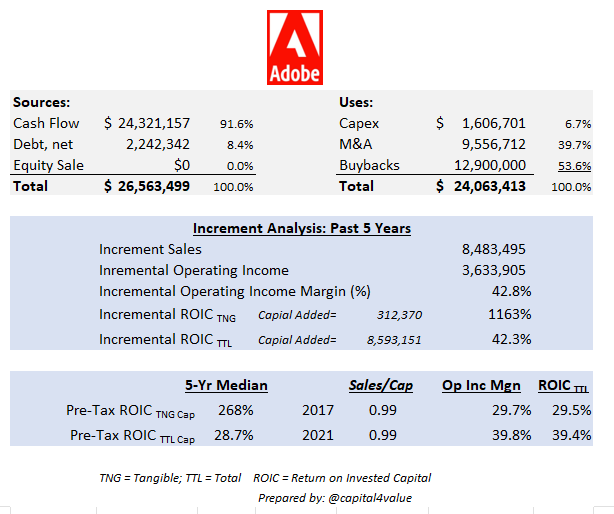#SMB Value tip:
How to remove excess or non-operating compensation or increase compensation in the financial statements during the normalization process
Its better to normalize earnings of a potential acquisition b/c you, as the new owner, can change this
👇
How to remove excess or non-operating compensation or increase compensation in the financial statements during the normalization process
Its better to normalize earnings of a potential acquisition b/c you, as the new owner, can change this
👇
1/x Many times owners pay themselves over or under a replacement compensation (mainly due to tax reasons)
Many Owners may be paying family members higher than normal compensation rates
These items should be adjusted to 'normalize' the financial statements
Many Owners may be paying family members higher than normal compensation rates
These items should be adjusted to 'normalize' the financial statements
2/x When buying a company you are gaining control
As a control adjustment you can operate the biz as you please & so its common to make control type adjustments such as normalizing compensation
A compensation adjustment is a controlling adjustment for valuation purposes
As a control adjustment you can operate the biz as you please & so its common to make control type adjustments such as normalizing compensation
A compensation adjustment is a controlling adjustment for valuation purposes
3/x
When adjusting compensation you must do 2 things, 1 normalize comp
2 normalize payroll tax
Payroll tax affects owners of S Corps & C Corps. LLC's have owner draws & no payroll tax
In general, the biz pays half the payroll tax & the employee pays the other half (7.65%)
When adjusting compensation you must do 2 things, 1 normalize comp
2 normalize payroll tax
Payroll tax affects owners of S Corps & C Corps. LLC's have owner draws & no payroll tax
In general, the biz pays half the payroll tax & the employee pays the other half (7.65%)
4/x
When to normalize Payroll tax:
- Owner is leaving (& is taxed by the legal entity) & an employee is replacing them
- When an owner comp is adjusted for an an S or C Corp
- If an employee needs to be added, removed, or normalized
When to normalize Payroll tax:
- Owner is leaving (& is taxed by the legal entity) & an employee is replacing them
- When an owner comp is adjusted for an an S or C Corp
- If an employee needs to be added, removed, or normalized
5/x To adjust compensation take your EBITDA:
1 Add back current salary
2 Add back payroll tax (~7.65%)
3 Deduct Market Comp
4 Deduct payroll tax (~7.65%)
(if removing an employee, do steps 1 & 2 only)
1 Add back current salary
2 Add back payroll tax (~7.65%)
3 Deduct Market Comp
4 Deduct payroll tax (~7.65%)
(if removing an employee, do steps 1 & 2 only)

6/x
Be sure to normalize compensation & payroll tax when adjusting compensation
It's a straightforward procedure but crucial to get right
Be sure to normalize compensation & payroll tax when adjusting compensation
It's a straightforward procedure but crucial to get right
• • •
Missing some Tweet in this thread? You can try to
force a refresh

 Read on Twitter
Read on Twitter






